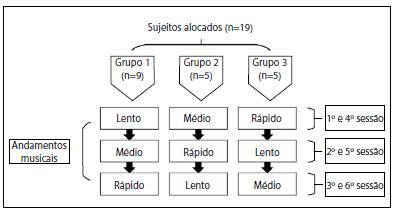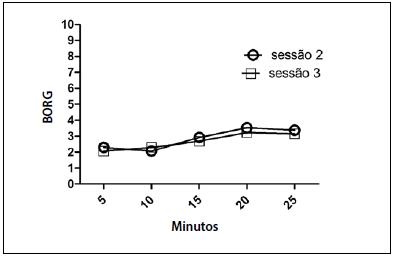ABSTRACT
Introduction:
Samba requires intense and varied movements that provide happiness and good chronotropic res-ponse making plausible to expect its benefits on cardiovascular health.
Objective:
To develop and evaluate a brazilian samba protocol aiming at physical training in cardiac rehabilitation.
Methods:
Fifteen patients with stable coronary artery disease, aged 60.74±5.96 years, underwent maximal cardiopulmonary test with determination of heart rate (HR) corresponding to the peak VO2 and first and second ventilation thresholds. During six sessions, they underwent twenty samba steps, in three music tempo classified by a metronome (slow, medium and fast). Subsequently, they underwent three sessions to verify the HR behavior and perception of effort. Descriptive analysis has been utilized in order to characterize the sample and check HR; T test or Wilcoxon test have been used to compare HR behavior (in different sessions) with significance level of 5%.
Results:
There was good adaptation to the samba steps, with HR between 62% and 72% of peak HR. During the dance sessions patients remained 86±4.17% of time in the target zone proposed for physical training in rehabilitation (60% to 90% of HR peak) and 77±2.26% of time in the target zone considered ideal, with HR situated between the first and the second ventilation threshold. Throughout the time the patients reported having perceived mild to moderate effort.
Conclusion
: Patients showed good adaptation to samba protocol, which proved being able to be adopted as a proposal for training in cardiac rehabilitation.
Keywords:
exercise; dance therapy; cardiovascular diseases



